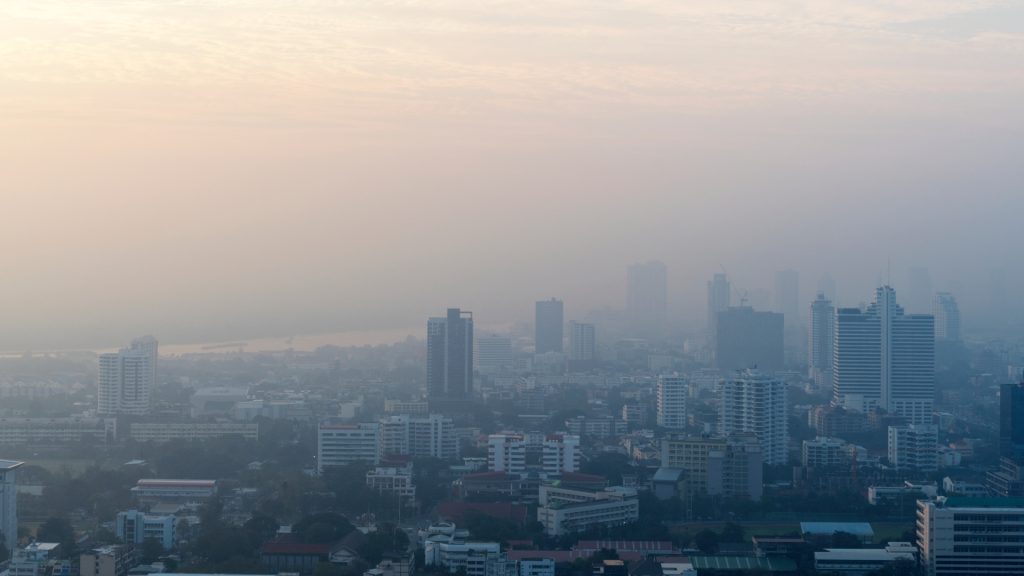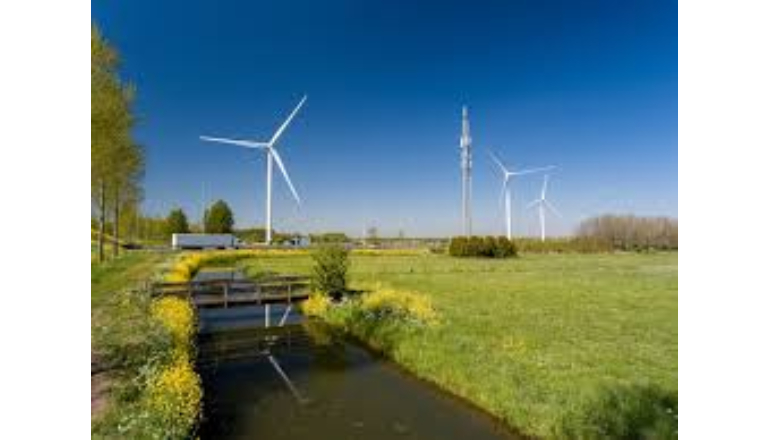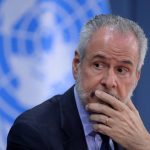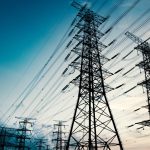The falling Air Quality Index (AQI) in Delhi frequently dominates headlines, at times spilling over to Mumbai, but the reality beneath these numbers paints a far grimmer picture. While annual averages may show improvement, air pollution’s spread and severity are deepening due to shifting climate patterns, affecting cities far beyond the traditional hotspots.
It begins not with a bang, but with a persistent, granular haze. The morning sun, which once sliced sharply through my Navi Mumbai balcony, now filters through a sepia-toned filter.

There’s a new, unwelcome member in our household—the air purifier. It used to be a seasonal acquaintance, whirring to life for a couple of hazy winter evenings. This year, it has become a permanent, frantic resident. Its colored indicator, a tiny digital canary in a coal mine, is a source of daily anxiety. It flickers between angry Red and cautionary Yellow; its rare, triumphant Green a fleeting memory of a cleaner past.
The rapidly blinking lights are a grim reminder that the headline-grabbing apocalyptic smog of Delhi has quietly, insidiously, pitched its tent in our Maximum City. As usual, we are not responding with the urgency the situation demands. I believe we are waiting for the Frankenstein to take over.
I am not trying to romanticize pollution. The frustrated journalist in me is penning this data-backed, lung-searing reality. For years, Mumbai prided itself on its coastal breeze, a natural cleanser that Delhi lacked. That defense mechanism has been utterly overwhelmed.
The warning was stark. In 2023, for the first time, Mumbai’s air quality, on many days, was worse than Delhi’s. An analysis by the Centre for Science and Environment (CSE) laid bare the grim truth: during the October-November 2023 period, Mumbai’s average PM2.5 level was 38% higher than the same period in 2022. Navi Mumbai fared even worse, with a 57% increase.
The alarming trend confirms that Mumbai’s pollution is rapidly converging with—and even surpassing—the notorious levels historically associated with the capital, making a comparative analysis of their current air quality crucial.
Air Quality Index
Delhi, despite news of a “falling AQI,” remains among the most polluted capitals globally. In 2025, its average PM2.5 levels remain around 108 µg/m³, vastly exceeding WHO’s safe limits. Acute spikes in winter months see AQI values jump into hazardous zones, sometimes reaching above 350–370, posing serious health risks.
Similarly, Mumbai faces aggravated pollution during festival seasons and in industrial sectors like Deonar and Sion, with PM2.5 levels often near or above hazardous levels, contrary to any superficial improvement narratives.
Navi Mumbai, traditionally considered relatively cleaner, now faces alarming air quality degradation. Recent November 2025 readings show PM2.5 regularly above 90 µg/m³ and PM10 around 110 µg/m³. AQI values show frequent breaches into “Unhealthy” and “Severe” categories. This extension of pollution to satellite cities hints at the spreading nature of air quality crises beyond mega-cities, fueled by regional industrial activity, traffic, and weather changes.
So, what is choking us?
The political blame-game offers a smokescreen, but not the real picture. The government is quick to point to external factors: dust from the arid Middle East, farm fires from Punjab. While these contribute, they are convenient scapegoats that divert attention from the home-grown catastrophe we have engineered.
The real culprits are staring us in the face, and they are a direct byproduct of our model of “development”:
- Mumbai and Navi Mumbai are a continuous, sprawling construction site. From massive infrastructure projects like the Navi Mumbai Airport, Coastal road and Metro lines to countless high-rise residential towers, the city is caked in concrete dust. Construction, many reports say, is the single largest contributor to Mumbai’s PM2.5 and PM10 pollution.
- The number of vehicles on our roads has exploded, and they are contributing to the pollution spike. The constant traffic snarls ensure that these emissions are cooked and concentrated at ground level, exactly where we breathe.
- The green buffers destruction is adding fuel to the fire. The mangroves of Navi Mumbai, Mumbai, and the Aarey forest are not just “green zones”; they are the city’s vital air filtration systems. Their systematic destruction for real estate and infrastructure projects has stripped us of our last natural defense.
The world’s most polluted cities:
India overwhelmingly dominates global pollution rankings, harboring the majority of the world’s most polluted cities. According to 2025 data from multiple sources, six to thirteen of the world’s top ten or twenty most polluted cities are in India, demonstrating a massive national crisis. The worst offenders include:
- Byrnihat (Assam), the most polluted city globally, with an AQI of 133 (PM2.5)
- Major North Indian cities such as Delhi, Ghaziabad, Greater Noida, Noida, Faridabad, Hapur, and Baghpat consistently feature high in the top polluted lists, showing AQI values often exceeding 150–300.
- Industrial hubs like Dhanbad and rapidly urbanizing areas like Chandigarh and Baddi also rank high on pollution indexes.
The regional clustering is notable. Most of the worst-polluted cities are concentrated in the NCR and northern industrial belt, heavily impacted by vehicle emissions, construction dust, crop residue burning, and industrial effluents.
The collective response to this crisis has been a masterclass in systemic apathy. The authorities treat this life-threatening air as nothing more than a seasonal inconvenience, routinely issuing hollow advisories for citizens to “stay indoors” and “wear masks.” But where, precisely, does one go? The poison shows zero respect for the threshold of our homes. The purifier’s persistent red light is a constant, stark reminder that the enemy is already inside our most intimate spaces.
We, the citizens, are equally complicit in this normalized disaster. We have effectively embraced the haze. We casually scroll past critical AQI alerts on our phones, we make dark jokes about the “Mumbai filter,” and we consistently prioritize convenience over consequence. The critical failing is the complete absence of widespread public outrage and the lack of any sustained, unified demand for genuine accountability from those in power.
The air purifier in my home is not a solution; it is a surrender. It is a personal, expensive admission that the public commons—the very air we share—has been poisoned beyond immediate repair.
Delhi’s decades-long crisis was a warning we chose to snooze. Now, the alarm is blaring in our own bedrooms, its indicator a steady, accusing red. The question is no longer if Mumbai will become the next Delhi. It already has. The question now is whether we will continue to breathe—and accept—the toxic air of our inaction.











